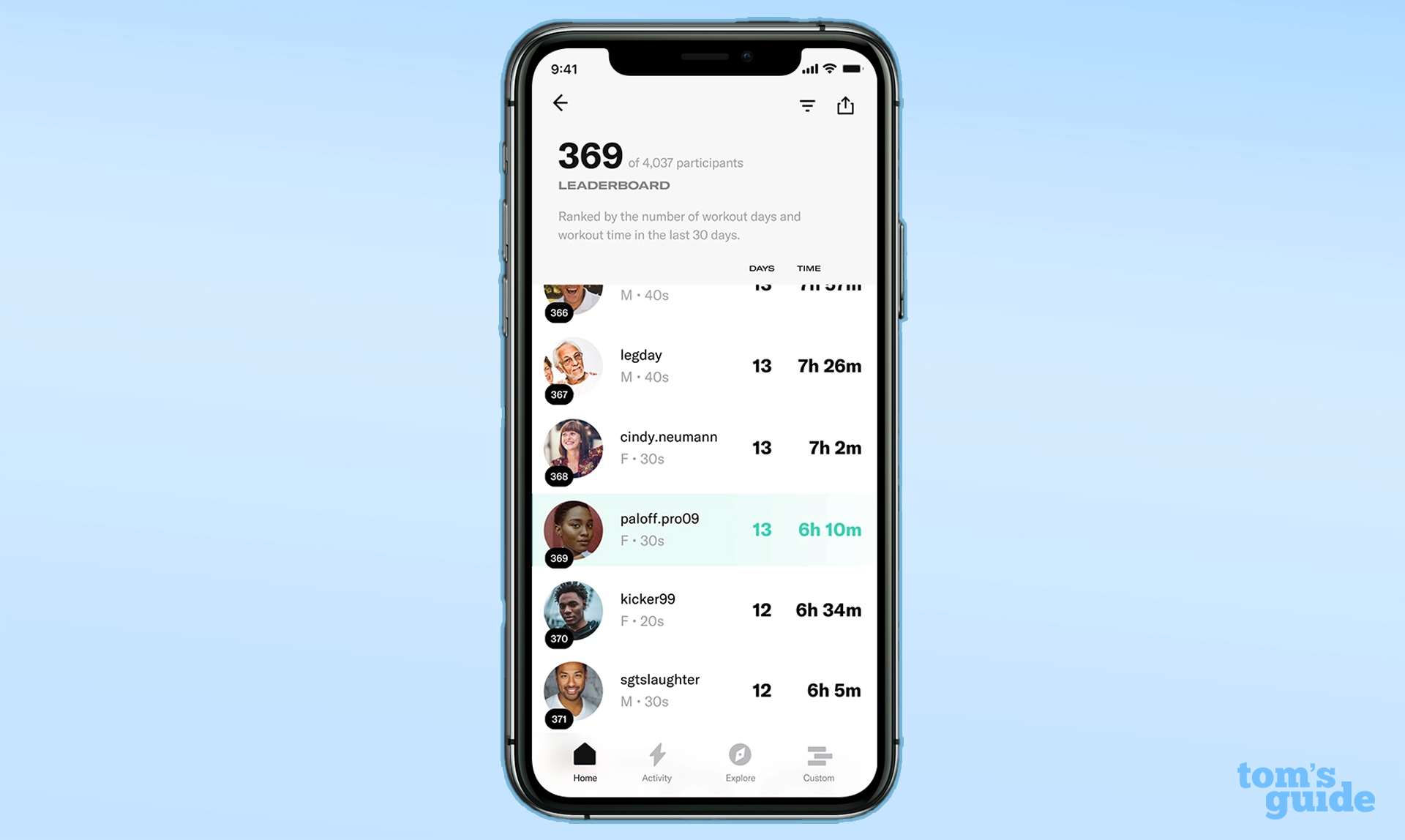Tom's Guide Verdict
Tonal is one of the most advanced workout machines on the market thanks to AI-powered weight adjustments, form correction and other intuitive training features.
Pros
- +
Doubles as wall mirror when not in use
- +
Intuitive, automatic weight adjustments
- +
Spotter mode is great for safety
- +
Can use your own cable accessories with T-lock system
Cons
- -
Very expensive
- -
Specific wall-mounting parameters
- -
Wish it had a larger screen
Why you can trust Tom's Guide
Price: $2,995 ($495 for smart accessories)
Screen: 24-inch touchscreen (1920 x 1080)
Speakers: 15-watt
Connectivity: Dual-band 802.11 Wi-Fi
Live classes: Yes
Compatible fitness apps: Strava, Apple Health
Sensors: 17
Accessories: Workout mat, smart handles, smart bar, rope, bench, roller
Max Tension: 100 pounds per arm
Size: 50.9 x 21.5 x 5.3 inches (with arms folded)
Weight: 135 pounds
Warranty: 3-year limited
The Tonal smart gym is a state-of-the-art fitness tool designed with one purpose in mind: rebuild your whole body from the ground up. Whereas competitors like the Tempo Studio and NordicTrack Vault utilize standalone towers to house the weights you’ll need for each workout, Tonal’s platform is more akin to the Mirror, another wall-mounted device that belongs to a growing subsector of futuristic fitness gear.
To see what Tonal’s premium platform has to offer, I visited their Manhattan showroom to take it for a spin. While I usually spend several weeks testing out a new smart gym before writing the review, this one is based on only three hours of hands-on experience. Nevertheless,Tonal’s team gave me a tour of all the most titillating features during my hands-on sweat session, and I’m basing this review off those impressions – leveraged against other smart gyms we’ve evaluated in the past, which includes the Mirror, Tempo Studio, Tempo Move, and Nordictrack Vault. (Up-and-comers like Fiture and the Peloton Guide strength trainer are also on the horizon.)
Keep reading our Tonal review to see why it belongs on our list of the best home gym equipment.
Tonal review: Price and availability
The wall-mounted Tonal unit costs $2,995 via the company’s website, but in order for that machine to be useful, you’ll have to pony up an extra $495 for the accessory package (ie, smart handles, smart bar, rope, bench, roller, workout mat), bringing the grand Tonal to $3,490 — plus a $49 monthly membership. Plus $250 for installation.
This is on a par with the NordicTrack Vault; the fully-loaded model costs $2,999 and includes an exercise mat, two yoga blocks, three loop bands, three super resistance bands, six pairs of dumbbells (ranging from 5 to 30 pounds), two kettlebells (20 and 30 pounds), shelving, and a cleaning towel.
Similarly, the Tempo Studio comes in three different bundles. The Starter bundle ($2,495) includes two 7.5-pound dumbbells, four weight collars, several weight plates (75 pounds total), and a workout mat. The $3,245 Plus bundle includes all of the above, along with a 25-pound barbell, two more weight collars, two 25-pound weight plates, a recovery roller, a heart rate monitor, and a folding bench. The $3,995 Pro bundle adds in two 45-pound weight plates, a weight storage rack, a folding squat rack, and Tempo’s kettlebell system to the mix.
The lululemon Mirror comes in four different packages ranging from $1,345 to $1,895. The most expensive package bundles in a couple rate monitors, fitness band packs, yoga blocks, and a few other basic accessories with the wall unit itself.
Get instant access to breaking news, the hottest reviews, great deals and helpful tips.
As is the trend with other smart home workout equipment, you’ll also need to subscribe to Tonal ($49/month), which is markedly pricier than the $39/month subscriptions for the Tempo Studio, Mirror, and NordicTrack Vault.
Tonal review: Setup and installation
Also like most smart gyms, the 135-pound Tonal requires professional installation, which means you need access to the proper wall studs. The company recommends a 7 x 7-foot area in front of the machine, and ceilings with a height of at least 7 feet, 10 inches. Tonal’s installation page includes a survey to complete before checkout to ensure your dwelling is adequately compatible.
While I thought my apartment was suitable, the Tonal installation team hit a wall (so to speak) once they were on site. In short, the walls of my apartment are made of concrete, which Tonal’s delivery guys — and my landlord — did not want to drill through.
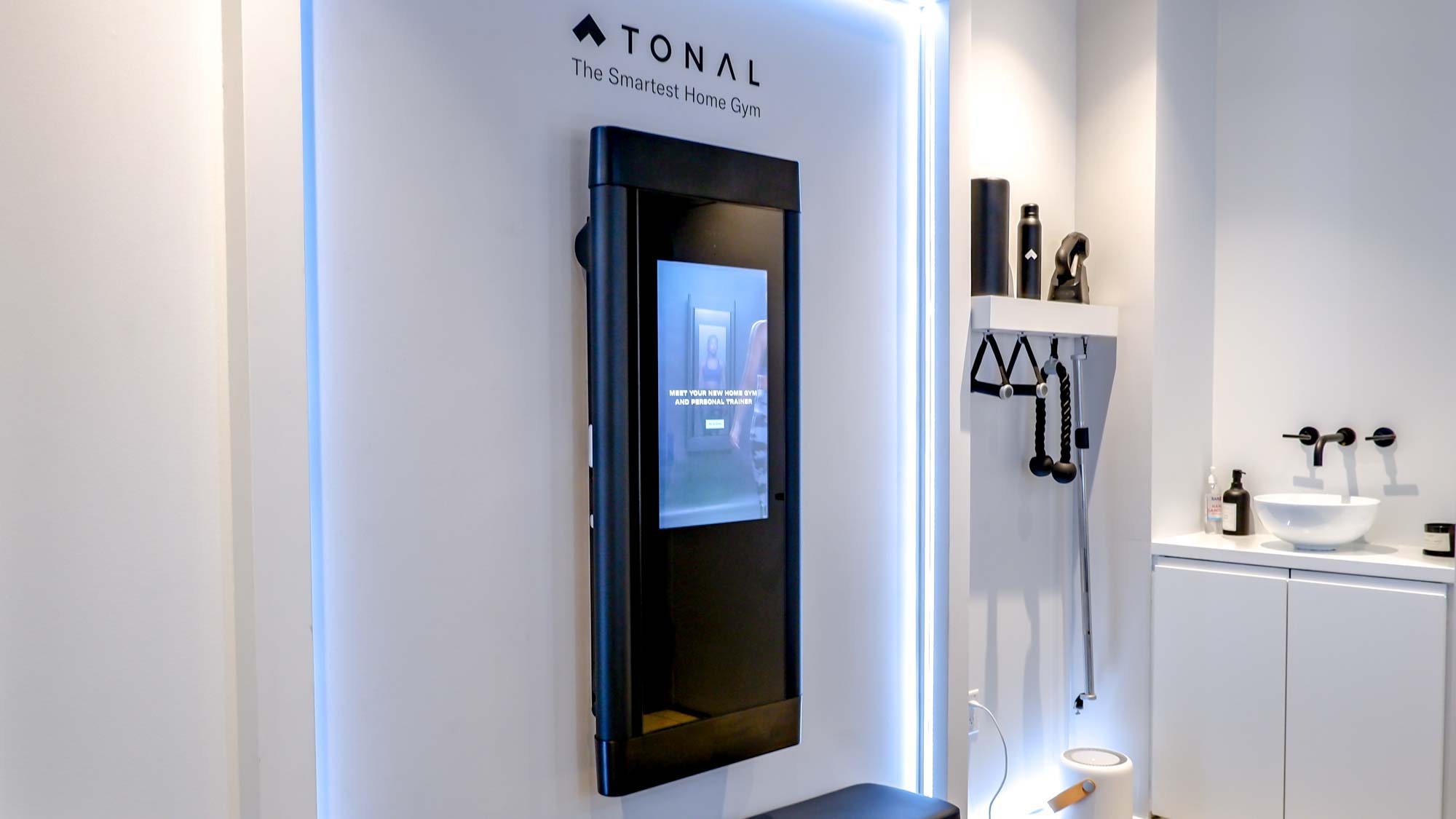
Since at-home testing was officially out of the picture, I set up an appointment with Tonal for a workout-walkthrough in Manhattan. I took an extended tutorial of the Tonal platform, and tested the machine’s various capabilities with a variety of dynamic full-body workouts.
Tonal review: Design
With its stowable arms packed away and the power turned off, the Tonal unit itself is an unassuming piece of tech one could mistake for a fancy wall mirror. At 50.9 x 21.5 x 5.3 inches, though, it’s not quite as skinny as lululemon’s Mirror (52.6 X 21.1 x 1.7 inches), which lies more flush with your wall, as it doesn’t include any other equipment built into the device itself. Tonal’s 24-inch HD touchscreen is also dwarfed next to the Mirror’s much-larger 43-inch display. On the bulkier end of things are the NordicTrack and the Tempo Studio, both free-standing devices that also house a set of dumbbells inside; for the latter machine, its reflective surface is really just a bonus.
Whereas mounting Tonal on your wall is a non-negotiable part of the company’s installation process, the more minimalist Mirror has the additional option of a stand. That being said, the Mirror was designed for more casual, fashion-forward weightlifters, while Tonal is genuinely capable of pushing your athletics thresholds to new heights.
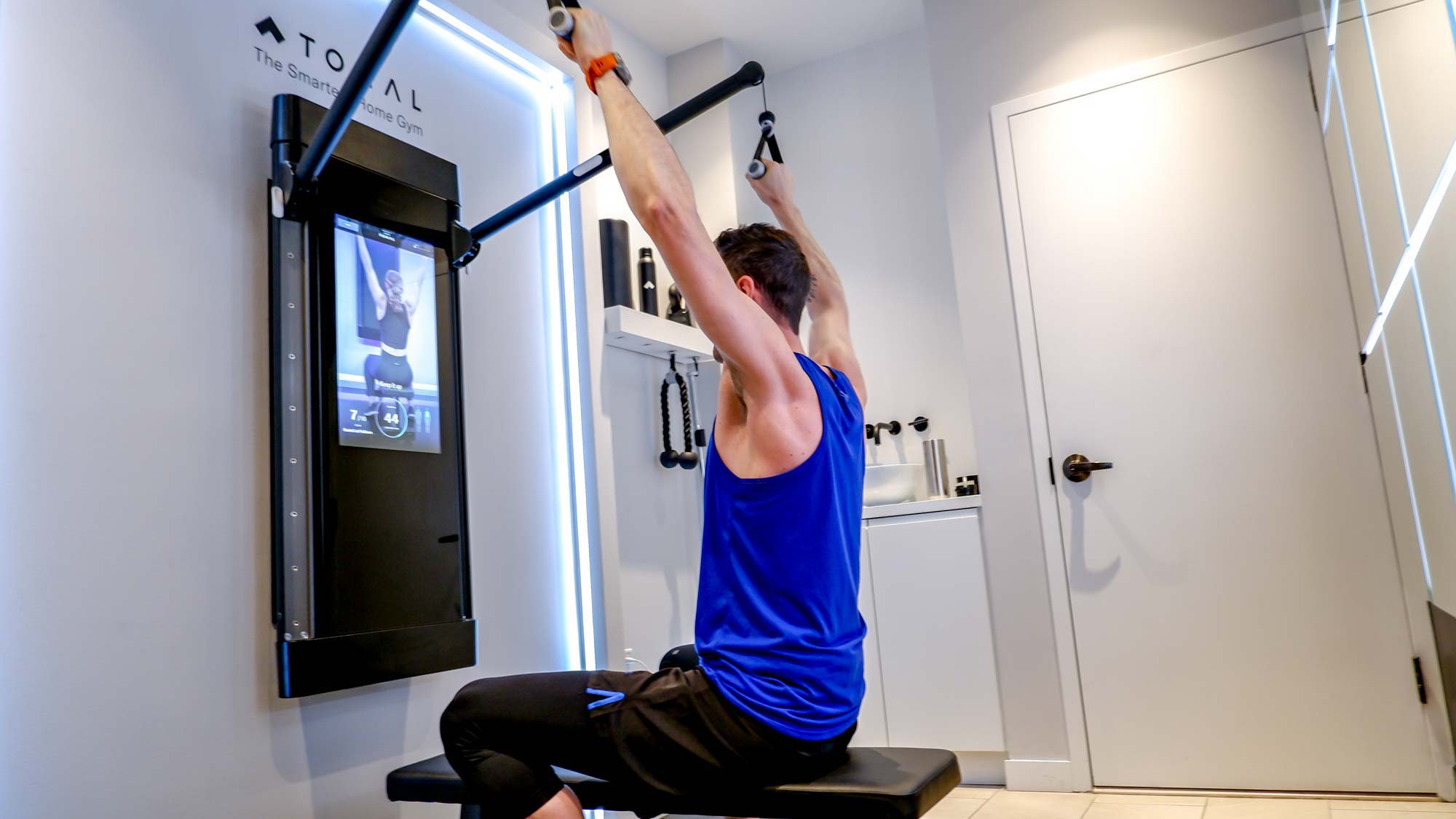
Most Tonal classes involve a warmup or cooldown of some kind, and once the class begins, you can follow the trainer’s movements on the Tonal’s screen to find the proper form if you’re unfamiliar with a particular exercise. The trainer walks you through any necessary machine adjustments, and once you’ve activated one of the smart accessories, the rep counter keeps track of each set on screen, along with your heart rate, total volume lifted, and your overall range of motion. If you’re into the gamification of your workout routine, look no further.
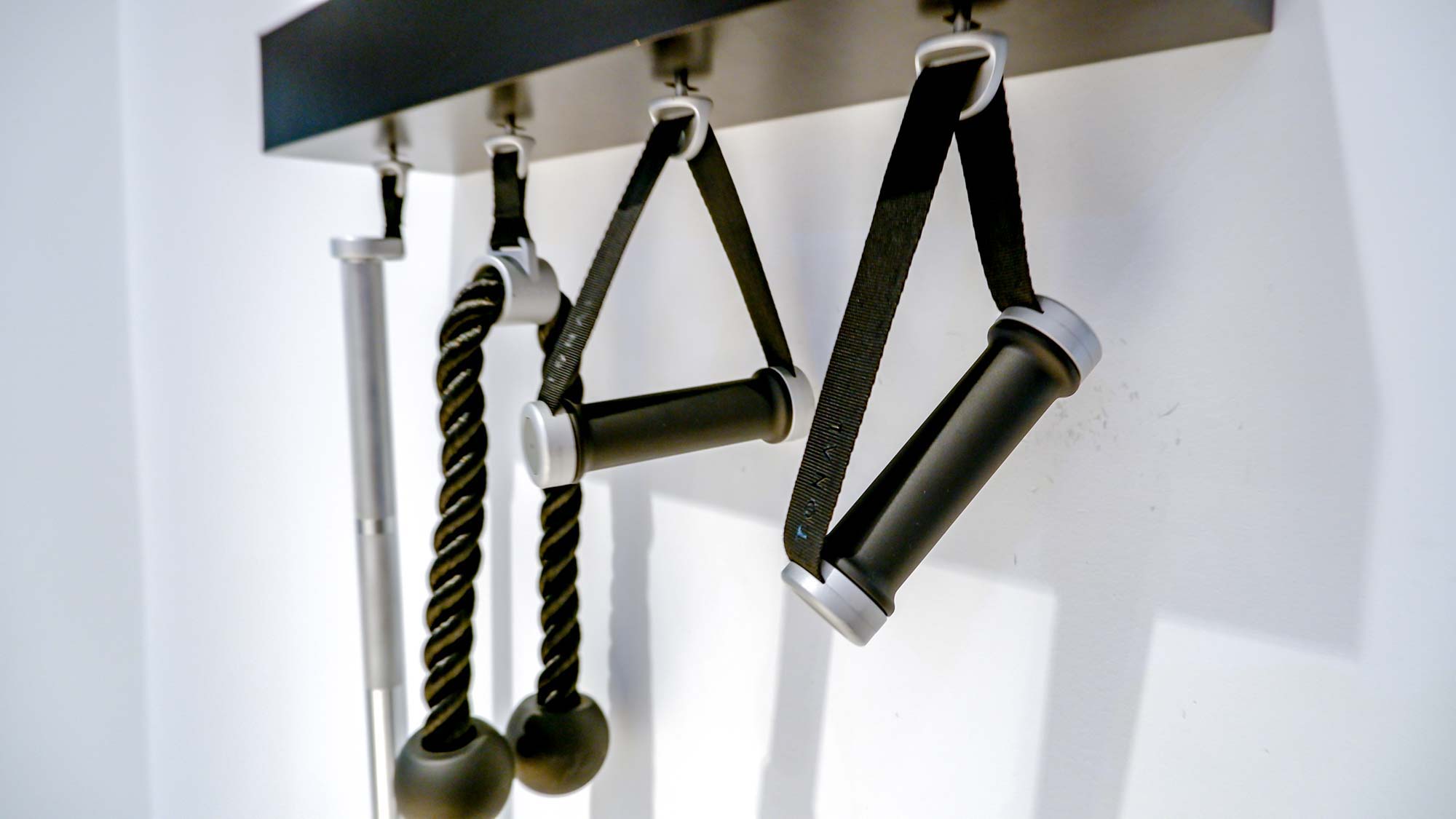
The Tonal looks to replicate the effect of traditional dumbbells and kettlebells with a set of adjustable-resistance arms, not unlike the Bowflexes of old. Tonal’s complex system of digital mechanisms use magnets and electricity to quickly adjust resistance as you go. So instead of swapping out dumbbells or weight plates throughout any given workout, you swap out Tonal’s “smart” accessories — via the built-in T-lock adapters — that attach to the arms, which swing out from either side to a 75-inch wingspan. Once the workout begins, the weight resistance changes automatically.
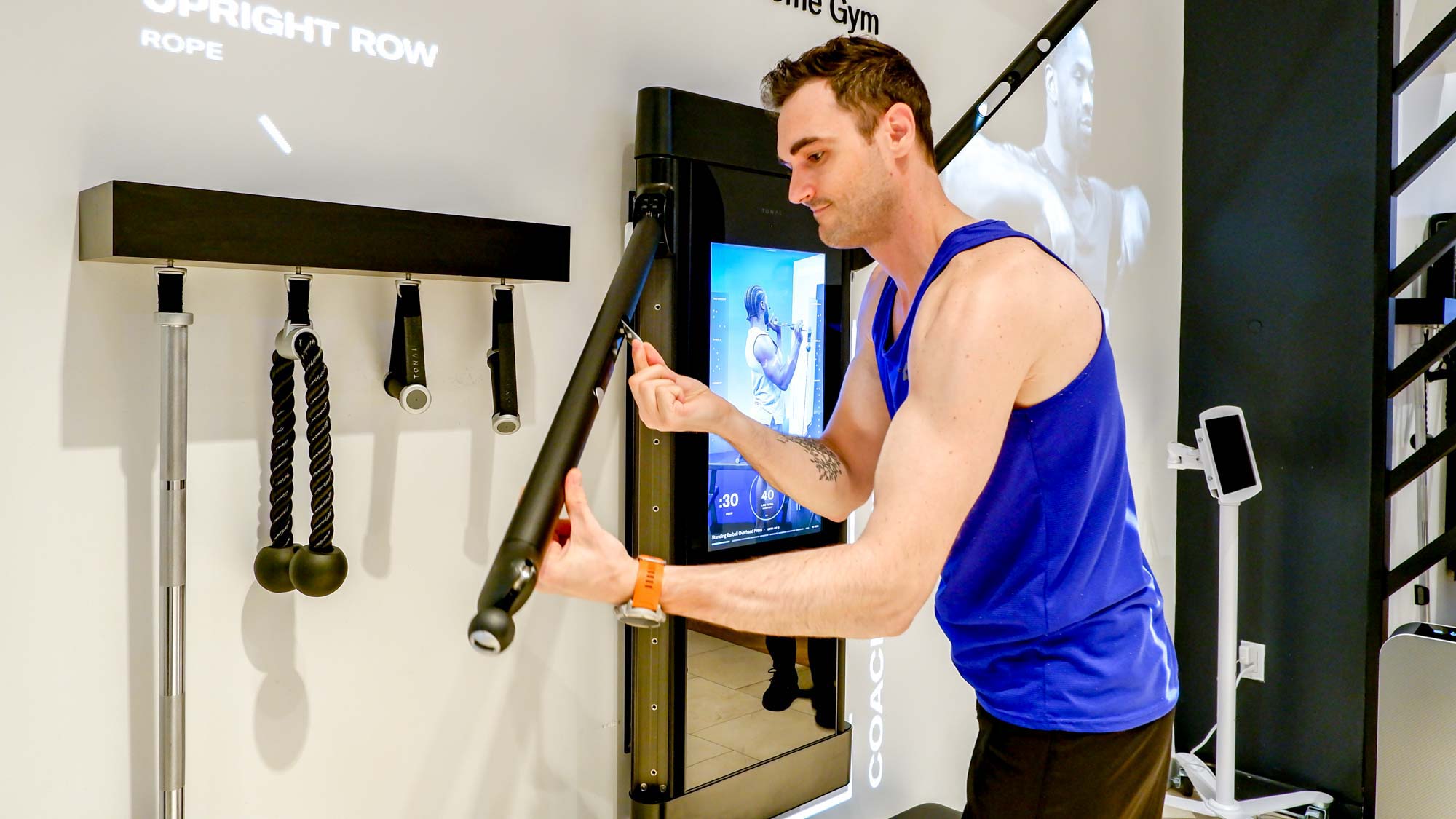
Similar to other smart mirrors on the market today, such as the Vault, the Mirror, and the Peloton Studio, the Tonal has a small camera at the top of the touchscreen, which is inactive at the moment.
Tonal review: Display
I feel like there was a missed opportunity with Tonal’s touchscreen. It’s sharp, responsive, and gets the job done, but competitors like the Mirror and Fiture have much larger 43-inch displays. The extra visual real estate creates a more lifelike personal training experience overall.
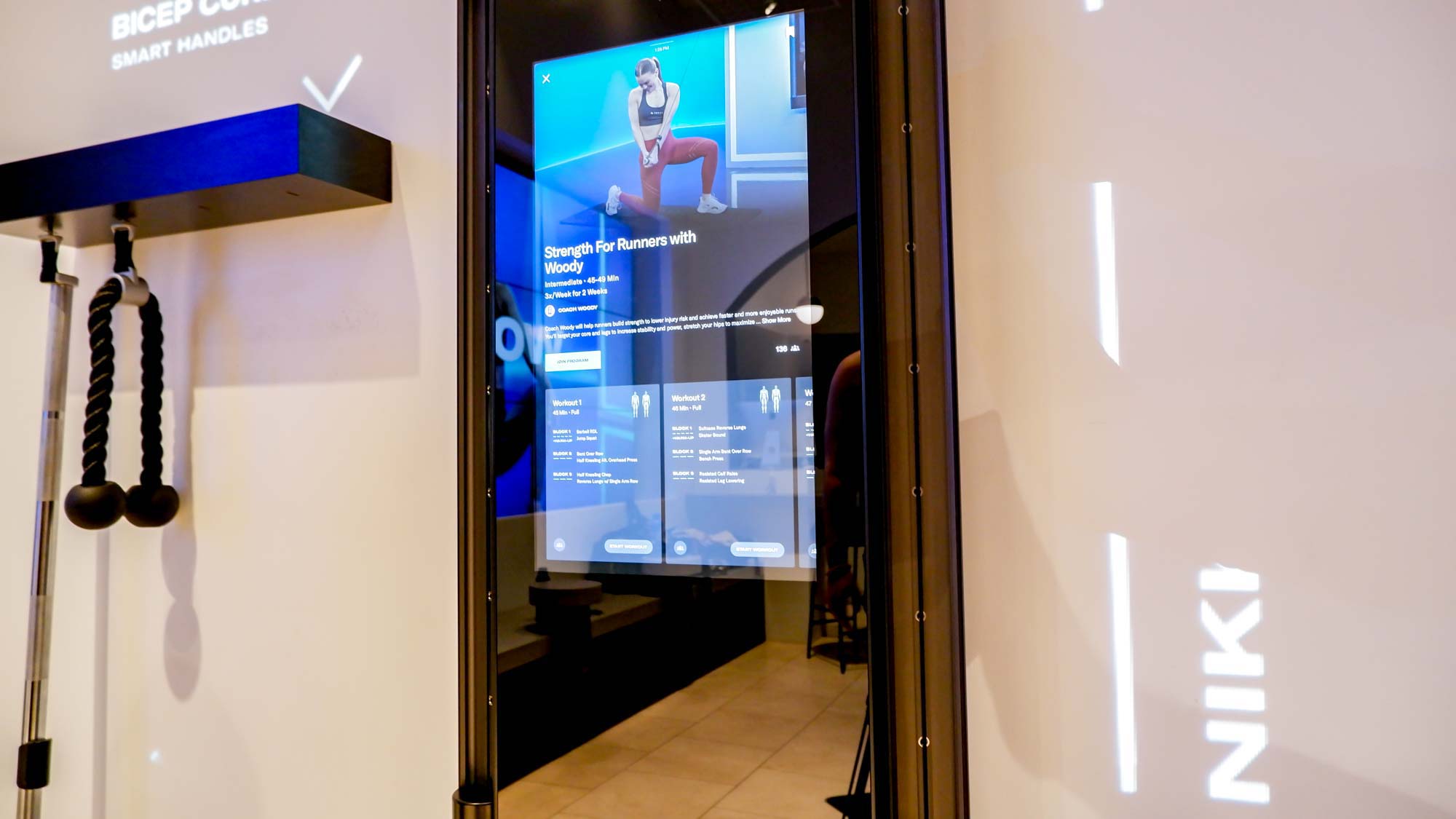
That being said, the Tonal houses a helluva lot more hardware inside than either of those smart gyms, and since I was always standing close to the machine during a given workout, it’s not like I ever had to squint as I mimicked various trainers’ movements on screen. However, I would have appreciated a lower screen placement — or even a tilting option — for any floor-based exercises; I had to crane my neck to see the trainer during all of the ab exercises I sampled. (I have similar complaints for the NordicTrack Vault and Tempo Studio.)
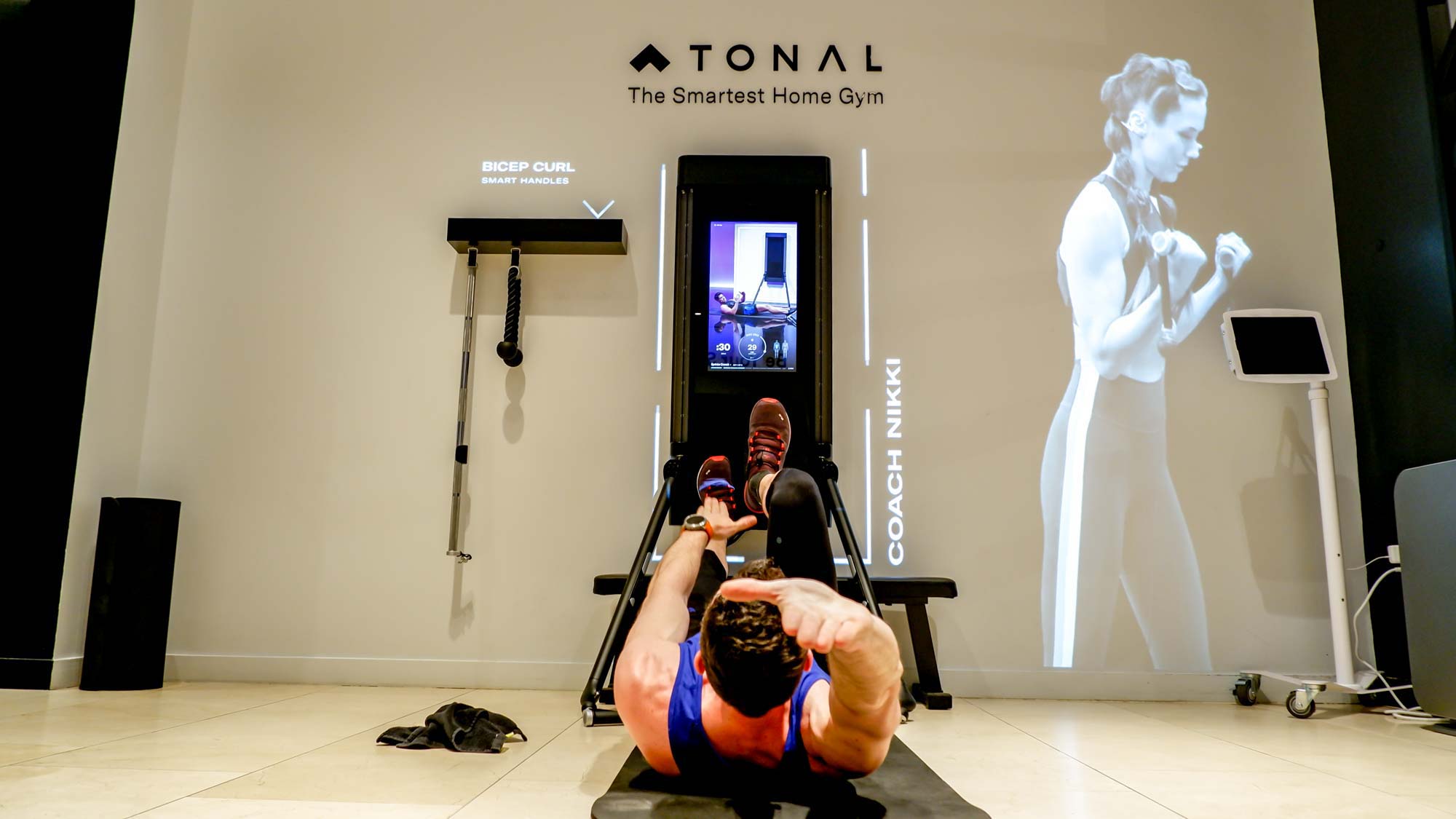
Speaking of which, the Vault’s swiveling mirror is a huge perk in my book; you can turn it to any horizontal angle you like when in use, simultaneously granting full access to the inner shelving. The Tempo Studio and wall-mounted Tonal have exactly one angle for their smaller reflective surfaces: straight forward.
Tonal review: Performance
When you create a Tonal account, you enter all your logistics (age, height, weight, gender) and select whether you’re a beginner, intermediate, or advanced gym-goer. Then it’s time to choose your primary and secondary fitness goals — the choices include “boost energy,” “build muscle,” “gain strength,” “get lean,” “improve performance,” or “maintain fitness” — and complete your first workout, which is essentially a strength assessment. Once this assessment is complete, Tonal’s AI takes over from there, automatically adjusting weights as you get stronger and complementing each workout with customized instructor guidance to boot. (Though there are manual controls, too.) In short, the more you use Tonal, the smarter it gets, and the stronger you become.

Tonal uses 17 different sensors to provide real-time guidance customized to your personal movements and technique, in the form of both verbal feedback and pop-up notifications on screen. Overall, the whole workout experience felt very organic as I progressed from one exercise to the next. Since the rep counting didn’t start until I activated each smart accessory with my thumb, I didn’t feel rushed, either.
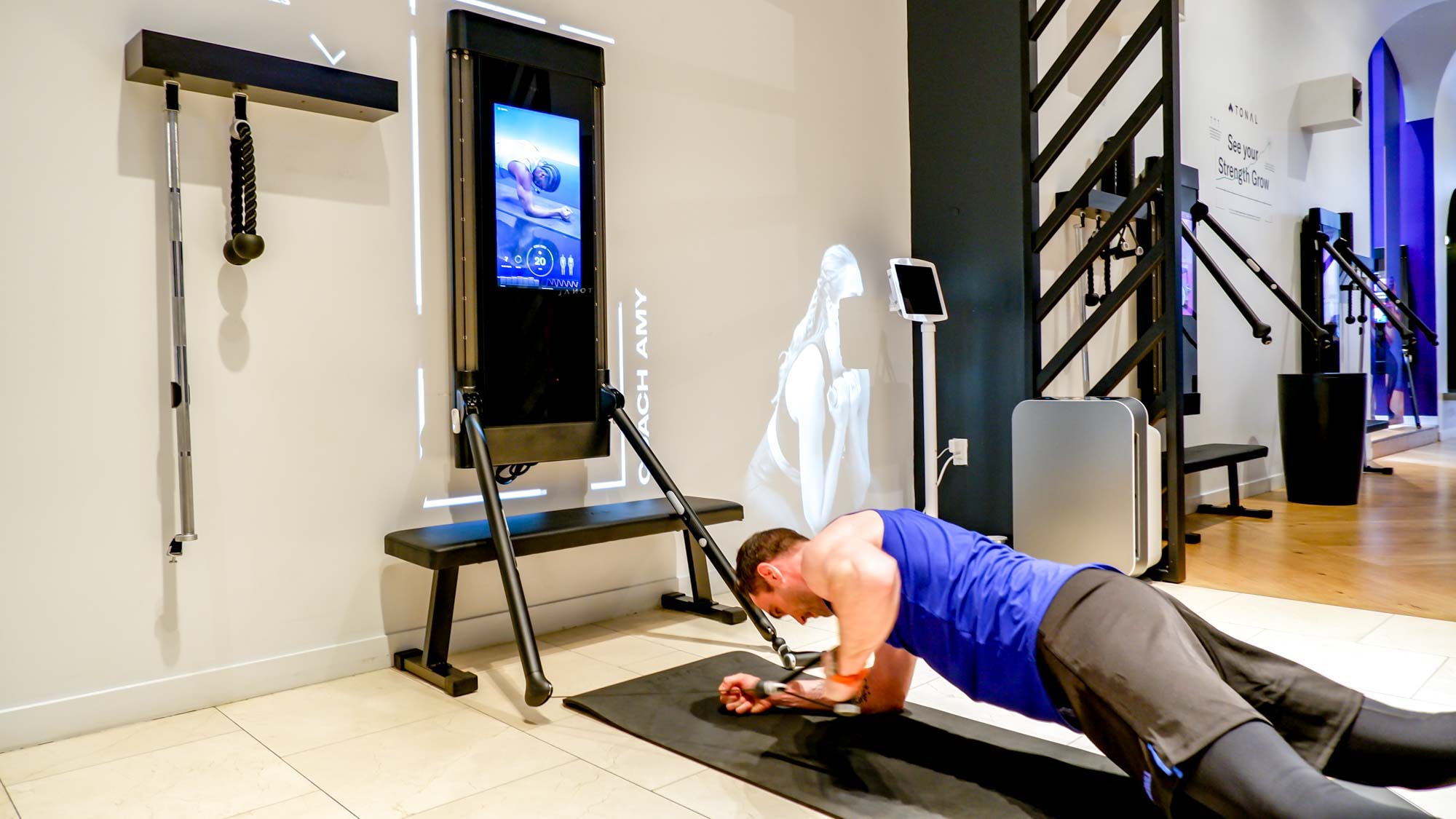
Tempo’s 3D sensor tech (for both the Studio and Move) offers similar rep-counting and form-correction tech that gets smarter with every workout. However, Tempo requires you to stand six feet from its display — or your iPhone — in order for the sensors to work properly, which makes for a more persnickety platform than Tonal, whose analog accessories feel more accurate and reliable than Tempo’s 3D sensors.
Once I got through this initial strength assessment, it was go time. To get an idea of how the machine felt, I completed a variety of short workouts that included bicep curls, tricep kickbacks, shoulder press, woodchoppers, and other core-crushing exercises that put my whole body to work. After I figured out how to adjust the arms properly, swinging them out to correspond with the trainer’s movements felt smooth as butter; on-screen indicators pop up to help. There are little buttons to push on Tonal’s smart accessories to start tracking your reps; if you forget to activate these buttons, the adaptive weight feature won’t work properly.
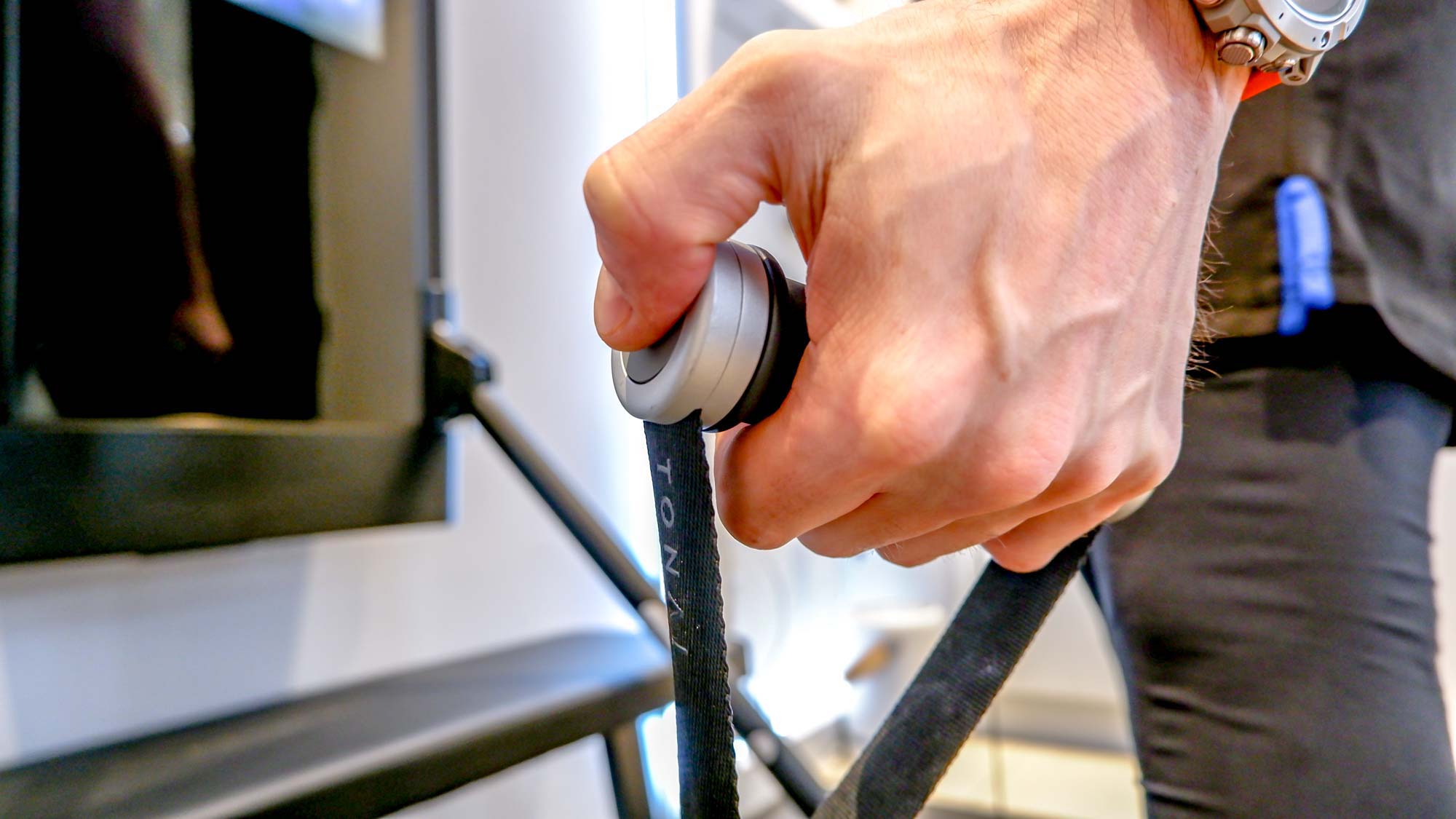
While I wish the 24-inch HD touchscreen were larger, I’ve got no complaints about the software; menu selections were intuitive, lag-free, and easy to navigate. And while I didn’t spend much time digging through those menus during my tutorial, the workout-selection screens felt very similar to iFit in all the best ways, and were just as intuitive. Tonal’s team of trainers are helpful, knowledgeable, and friendly; personal training is all about the genuine exchange of energy, and working out with their coaches was highly motivating, to say the least — even from afar.
As you move through each set of each exercise, you can monitor myriad metrics on screen, where you’ll find such data as your heart rate, range of motion, and total volume lifted. As a lover of logistics (and gamifying my workouts on the fly), I appreciate all the extra info. If you hit any PRs during a given day, you’ll know it.
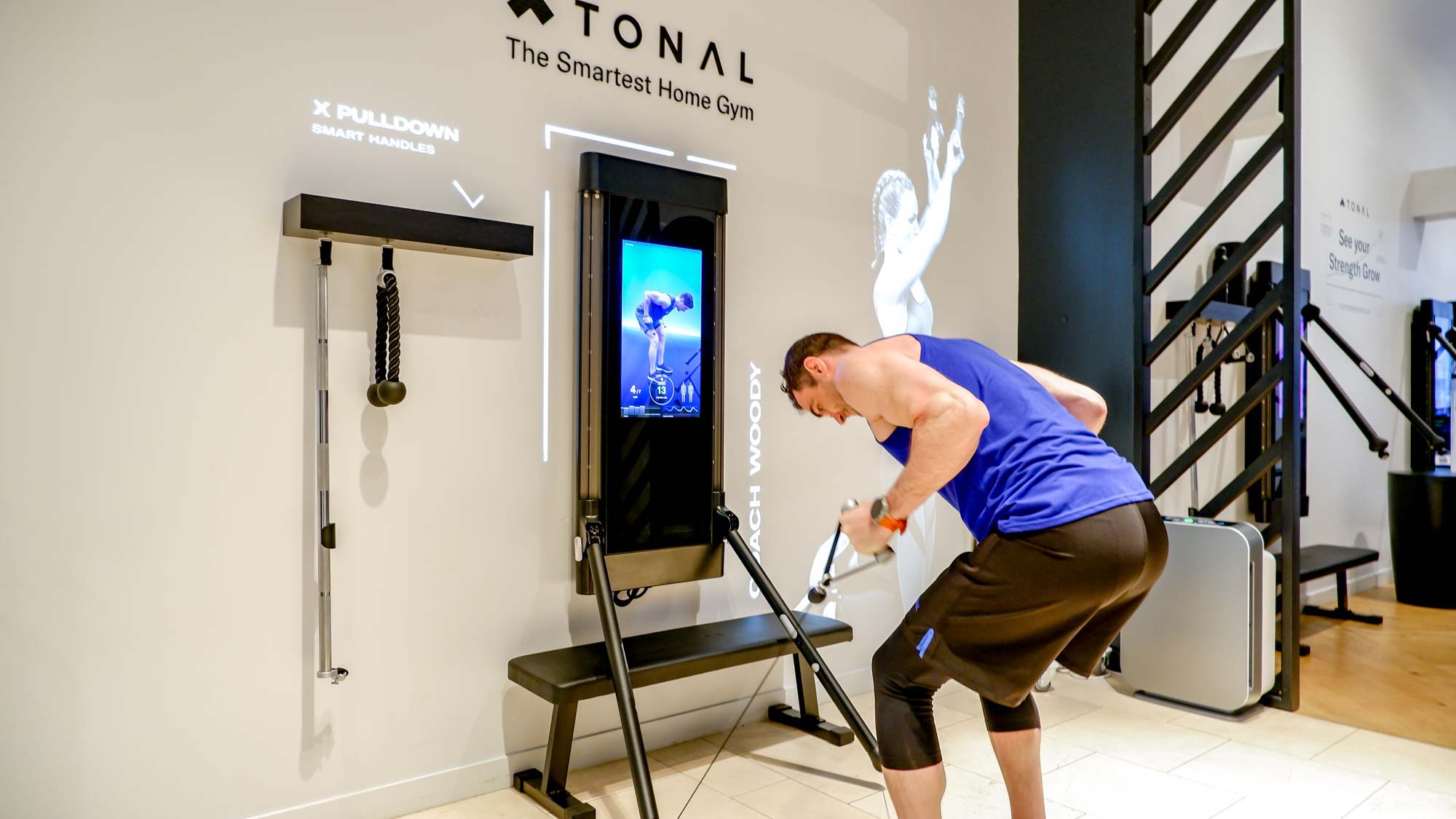
When you’re done getting swole, you can check the summary at the end to keep track of your progress, such as total time under tension, total pounds lifted, and total moves completed. Again, this is all par for the course in terms of smart gym offerings these days.
What really makes Tonal stand out is its adaptive weight feature, which automatically provides graduated resistance (ie, time under tension) throughout the entirety of each and every rep, allowing for maximum efficiency on the machine’s part and maximum effort on yours. The end result? One of the most dynamic workouts I’ve ever had. As I progressed through several sets of bicep curls, for example, the resistance got progressively harder as I pulled the handles up to my chin, but that resistance didn’t stay static as I lowered them back down. If you’ve ever done negative rep bicep curls at the gym before, that’s the best way I can describe how Tonal’s adaptive resistance works, not to mention the burnout effect I felt as a result.

There’s a useful spotter mode to detect signs of struggle when your form is off (eg, if the bar is tilted to one side mid-rep), automatically reducing weight when you start to fatigue. It’s a great safety feature that simply can’t be built into such dumbbell or barbell-based platforms like the Vault or Studio, allowing you to push yourself harder during solo workouts without opening up the risk for injury.
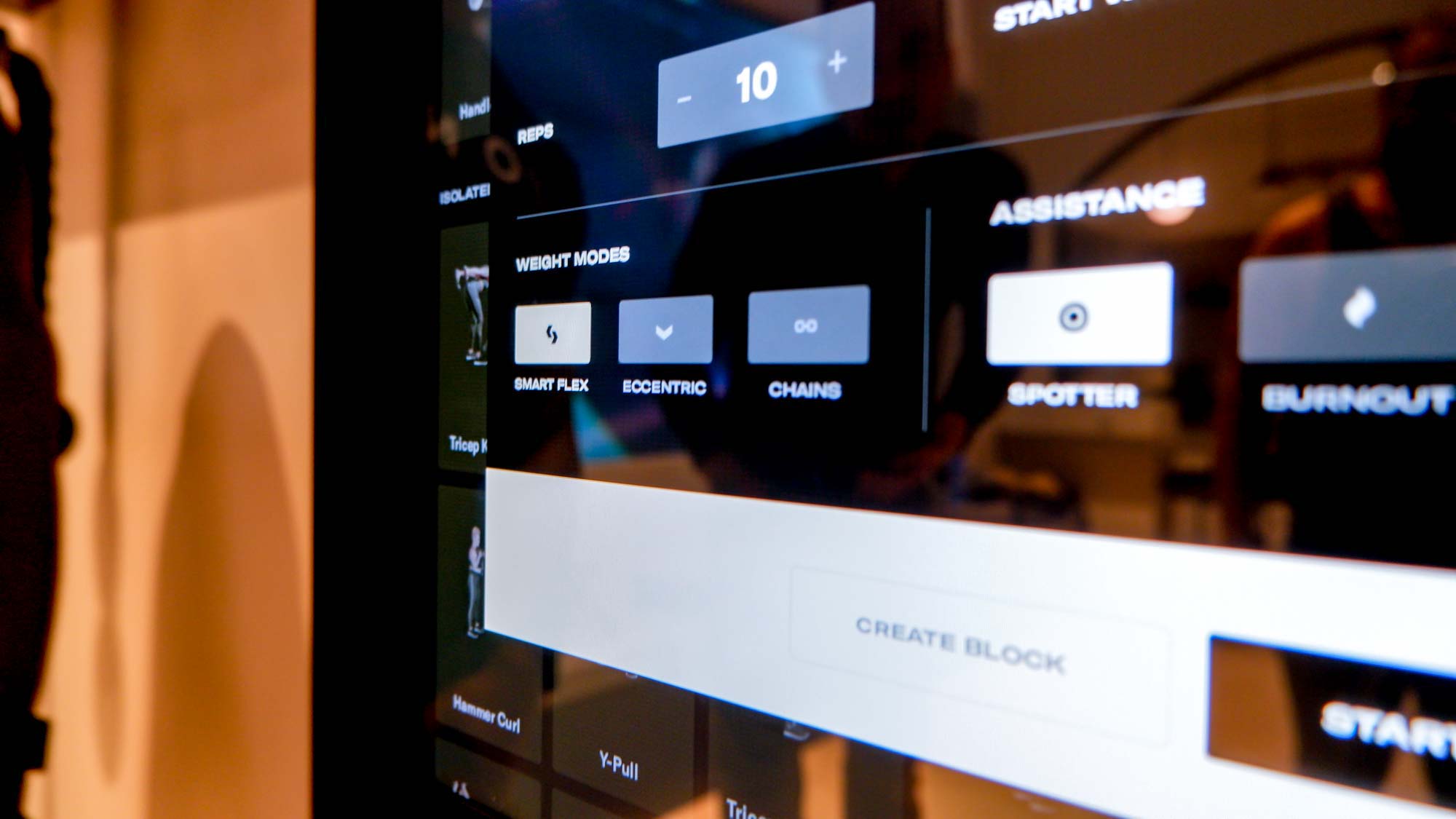
Tonal supports partner workouts (and virtual group workouts) to track reps for your gym buddies, which is great for any couples looking to spice things up at home: couples who sweat together stay together, after all.
Tonal review: App
Similar to any machine equipped with iFit — paired with NordicTrack’s iSelect app — Tonal memberships come with a smartphone app you can use to create custom workouts, which is a sweet perk for advanced users with specific fitness goals. Tonal also has partnerships with Apple and Amazon, so you can sweat it out to your favorite playlists as you work. The software is compatible with Strava and Apple Health, too.
For those with a competitive side, you can check in regularly on Tonal’s leaderboards; rankings are updated in real time. I sure worked up a sweat during my testing session, but not enough to put a dent in the leaderboards. Maybe next time.
Akin to the Tempo Studio, which only offers classes through the machine itself, you won’t get the full Tonal experience from their mobile app, but you can still access on-the-go workouts that don’t require any fitness gear at all, aside from a yoga mat and 30 minutes (or less) to spare.
iFit-equipped machines from the likes of NordicTrack, ProForm, and Freemotion let you access classes on your phone, smart TV, or any iFit-equipped device; the more iFit-friendly gadgets you own, in fact, the more dynamic your monthly membership becomes.
Tonal review: Bottom line
While I would have loved a full month to experiment with Tonal before offering my full assessment, that this is the best smart gym I’ve tested to date, and it’s got the edge over NordicTrack and Tempo in terms of AI-powered personal training. (Your move, Peloton.) To be clear, you can accomplish many of the same fitness goals with any of these platforms, but when it comes to comprehensive coaching that’s paired with top-notch training tech, Tonal is the smart gym to beat, hands-down. And I didn’t even get the chance to test out the live classes yet.
For a similar — but more minimalistic design — the $1,495 Mirror is more compact and markedly less expensive than Tonal, but you won’t get the same caliber of strength-training accessories to complement their classes, and the platform isn’t nearly as robust.
If you like the futuristic tech above — but hate the premium pricing — consider more modest smart gym competitors like the Tempo Move ($495) or the recently announced Peloton Guide strength trainer (around $1,000), which both utilize AI tech to facilitate top-tier personal training right from your TV.
Is Tonal smart enough to replace your old gym membership? You betcha. Everyone has a different fitness journey, but Tonal has all the training tools you need in a tidy package, as long as your goals aren’t too hardcore. Plus, just like every other smart gym platform on the market, this one is constantly evolving; on the day I visited Tonal’s showroom, they released a slew of golf-specific workout content courtesy of golf pro Michelle Wie West.
Granted, you can use one of the best fitness trackers and a good set of adjustable dumbbells to maintain a solid strength-training routine on the cheap. But if you’ve been considering a smart gym that can double as a tech-centric mirror, Tonal is quite literally the full package.

As a freelance journalist, TJ has over a decade of multi-medium storytelling under his belt. Leveraging a quarter century of collective coddiwompling amid the ever-evolving landscape of wireless gadgetry, his unique editorial background allows him to explore a variety of tech-centric subsectors on this fascinating planet. When he's not field testing new gear in the Catskills, Adirondacks, or an actual field, he can be found sipping Negronis in his living room and crafting Dr. Seussian poetry inside a tattered moleskin.

